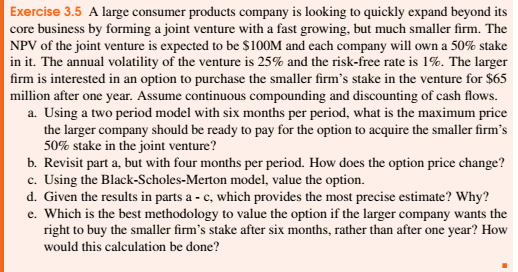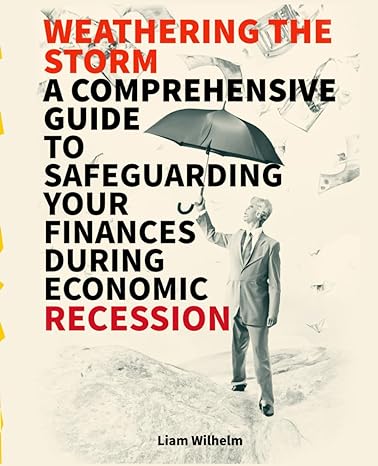
Exercise 3.5 A large consumer products company is looking to quickly expand beyond its core business by forming a joint venture with a fast growing, but much smaller firm. The NPV of the joint venture is expected to be $100M and each company will own a 50% stake in it. The annual volatility of the venture is 25% and the risk-free rate is 1%. The larger firm is interested in an option to purchase the smaller firm's stake in the venture for $65 million after one year. Assume continuous compounding and discounting of cash flows. a. Using a two period model with six months per period, what is the maximum price the larger company should be ready to pay for the option to acquire the smaller firm's 50% stake in the joint venture? b. Revisit part a, but with four months per period. How does the option price change? c. Using the Black-Scholes-Merton model, value the option. d. Given the results in parts a - c, which provides the most precise estimate? Why? e. Which is the best methodology to value the option if the larger company wants the right to buy the smaller firm's stake after six months, rather than after one year? How would this calculation be done? Exercise 3.5 A large consumer products company is looking to quickly expand beyond its core business by forming a joint venture with a fast growing, but much smaller firm. The NPV of the joint venture is expected to be $100M and each company will own a 50% stake in it. The annual volatility of the venture is 25% and the risk-free rate is 1%. The larger firm is interested in an option to purchase the smaller firm's stake in the venture for $65 million after one year. Assume continuous compounding and discounting of cash flows. a. Using a two period model with six months per period, what is the maximum price the larger company should be ready to pay for the option to acquire the smaller firm's 50% stake in the joint venture? b. Revisit part a, but with four months per period. How does the option price change? c. Using the Black-Scholes-Merton model, value the option. d. Given the results in parts a - c, which provides the most precise estimate? Why? e. Which is the best methodology to value the option if the larger company wants the right to buy the smaller firm's stake after six months, rather than after one year? How would this calculation be done







